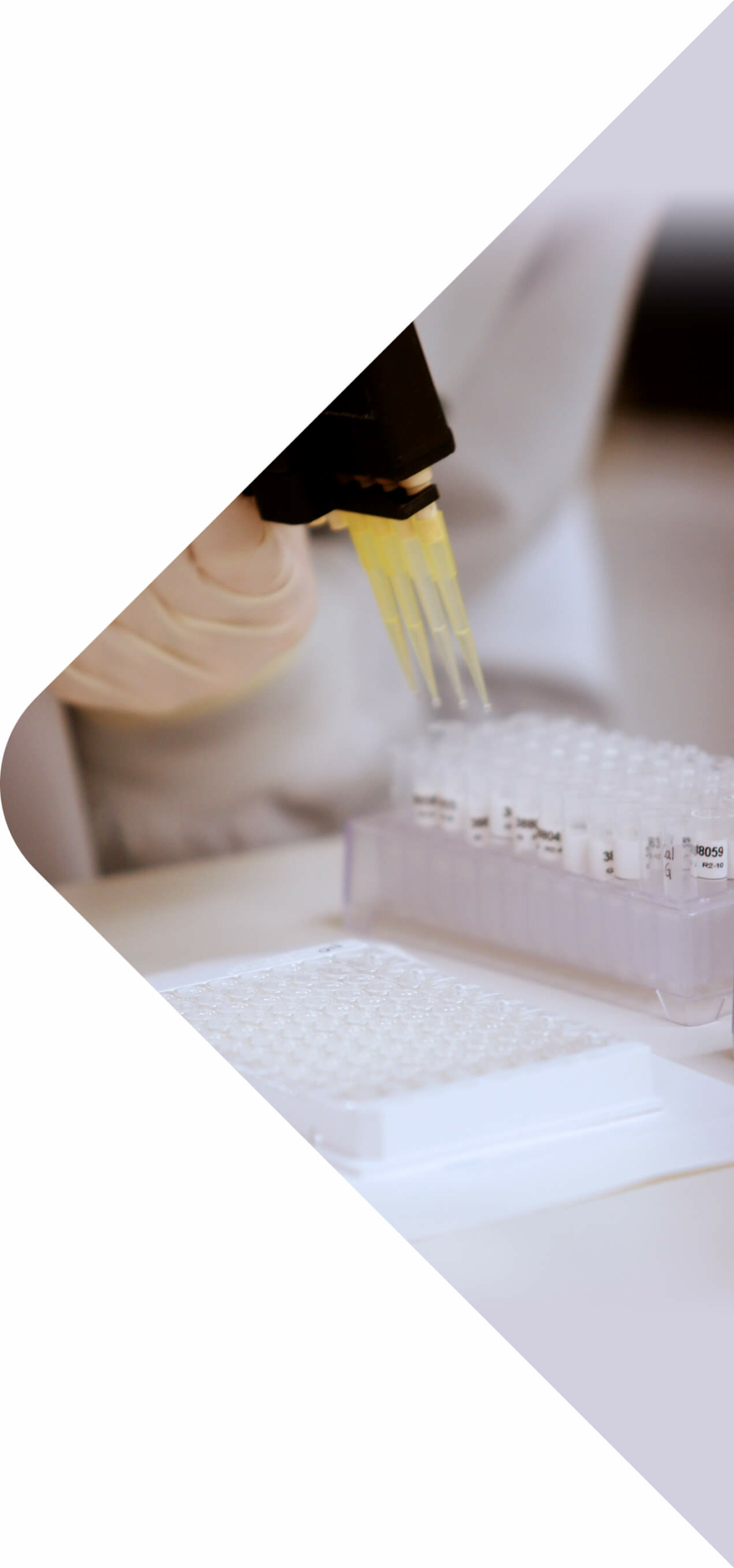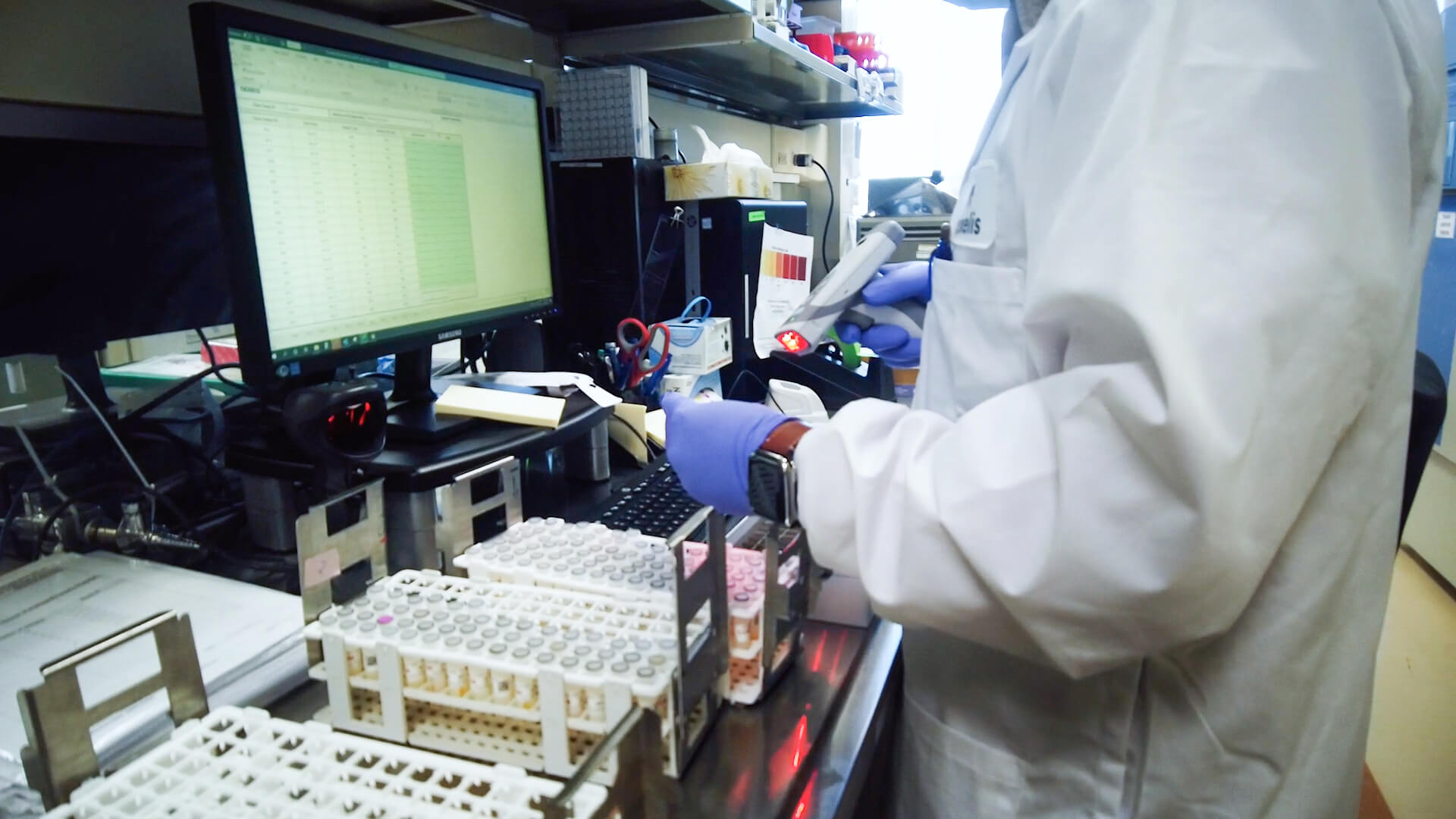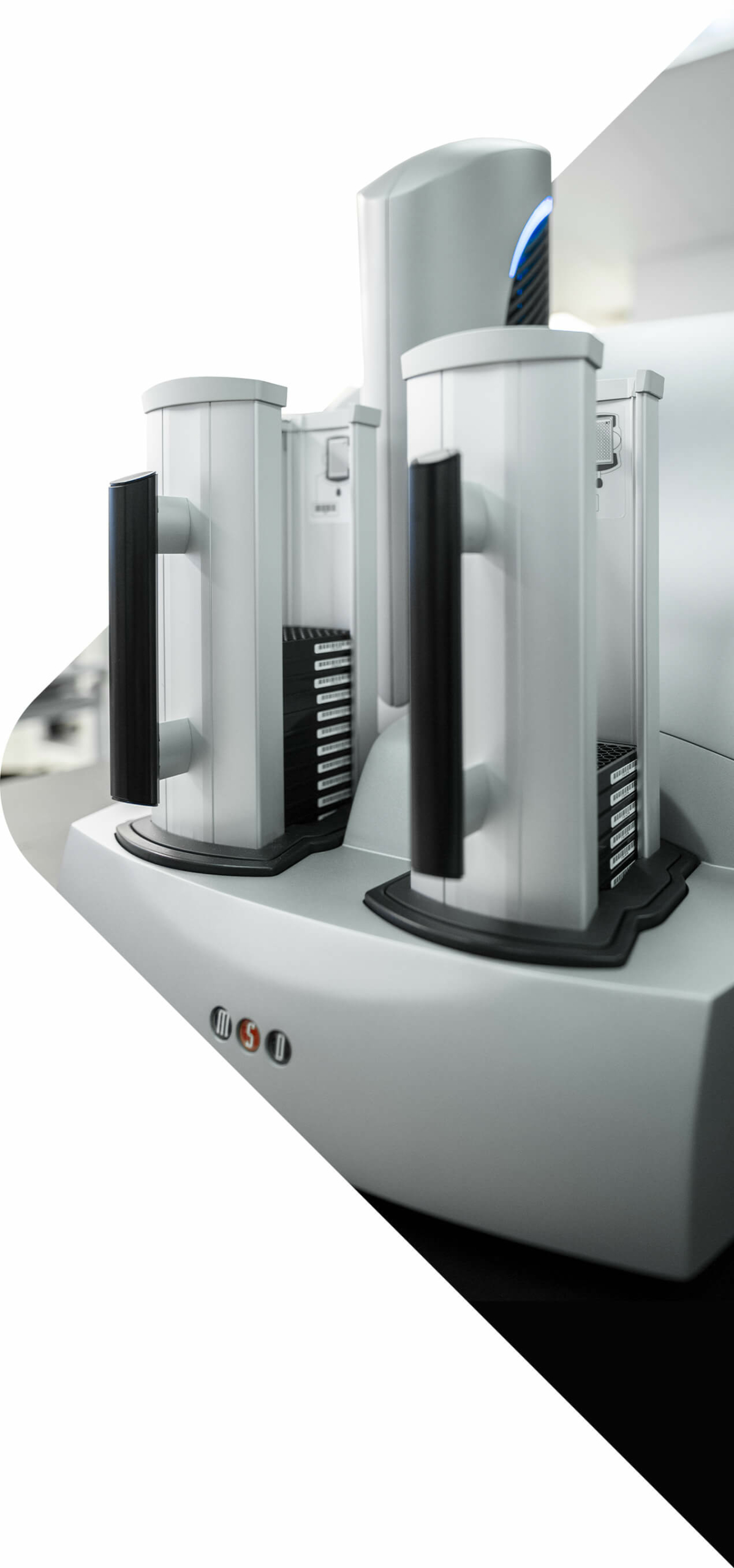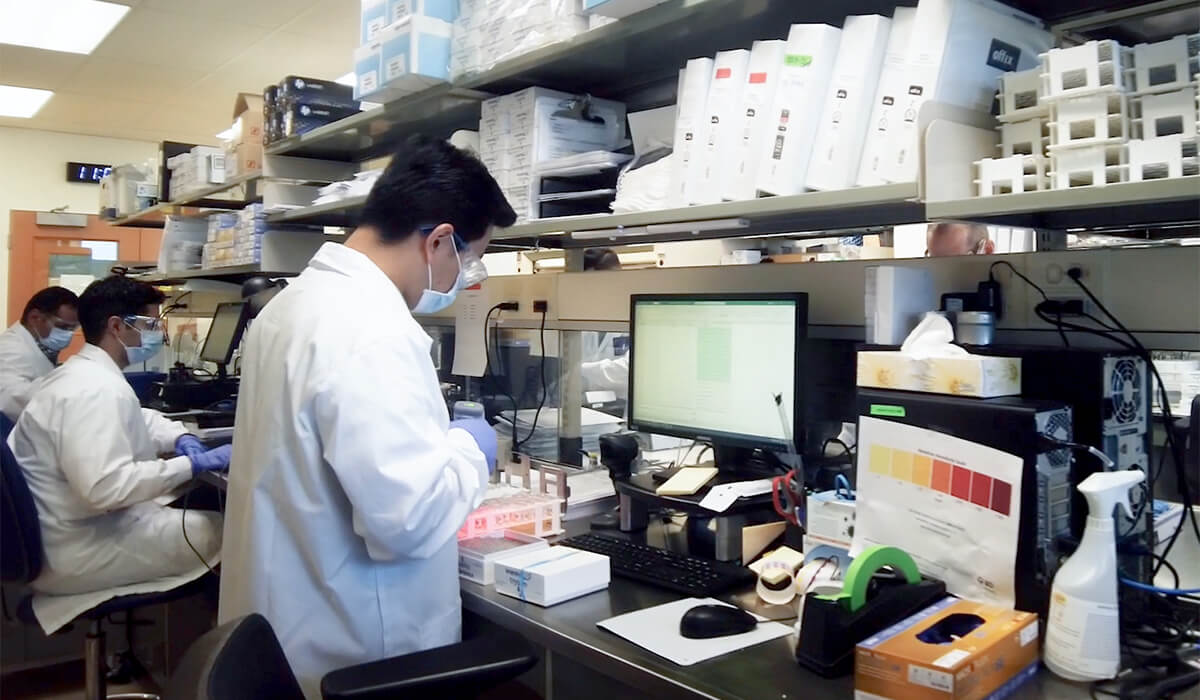Integrated Vaccine Platforms
Challenges to develop suitable assays and tests increase when vaccine development is accelerated in response to emerging infectious disease threats. At Nexelis, a Q² Solutions Company, we develop custom assays relevant to the disease state which is further adapted as the disease evolves. This progressive approach provides an early prediction of how the vaccine translates later phase clinical trials. A successful vaccine project requires not only an experienced partner who understands the complexity presented in the research, but one that also has the capability to scale operations.

Our end-to-end translational support for your vaccine and immunotherapy programs ranges from lead compound selection to post-market registration. In addition, our innovative and fit-for-purpose working models are ideal for evaluating the efficacy and immunogenicity of your vaccine candidates needed for regulatory approvals.
Viral Functional Assays
Plaque Reduction Neutralization Tests (PRNT) and microPRNT
Neutralizing antibodies promote the elimination of pathogenic viruses from the body and play a vital role in antiviral response. The gold standard for determining antibody efficacy is virus neutralization. The ability to rapidly monitor the neutralizing response is crucial for the development of efficient vaccines and drugs. The microPRNT assay can be utilized for high-throughput and small volume assay conditions. Results from this assay quantifies the number of Plaque Forming Units (PFU), which measures the reduction of PFU compared to each well report out the level of neutralization.
Neutralization and Microneutralization
The principle of the neutralization assay is the same as the PRNT. The readout of this test does not count the Plaque Forming Unit (PFU) as the endpoint, instead, the level of infectivity is indirectly measured by the survival of cells or utilizing reporter genes in virus such as luciferase or GFP.
Pseudo-particle Neutralization (PNA)
Pseudo-particles are replication-deficient viruses. These viruses can be modified to harbor the key glycoprotein from highly infectious virus and a reporter (luciferase or fluorescent protein) that can be used in the assay instead of the live virus. Infectivity of the virus can be quantified based on the reporter readout. PNA assays can be performed with lower biocontainment (Biosafety Level 2 facilities) and are a safer alternative to using live infective pathogens. Neutralizing activities are measured by the level of reporter gene expressed (luciferase or GFP) in multi-well plate readers that improves accuracy and objectivity as compared to manual plaque counting.
Hemagglutination Inhibition (HAI)
Many viruses such as influenza viruses are capable of inducing hemagglutination. HAI test is useful to assess functional antibody induction following an infection or vaccination. Measurement of antibody response pre- and post-vaccination is required to understand vaccine-induced immunity.
Bacterial Functional Assays
Our functional antibody assays for bacteria include complex assays such as:
Serum Bactericidal (SBA)
SBA assays are used to measure the level of antibody in the serum required to kill a bacterium through complement activation.
Opsonophagocytic (OPA)
OPA assays quantify the amount of serum antibody required to opsonize bacteria and undergo phagocytosis in the presence of complement proteins. The proportion of phagocytic cells that engulf the bacteria is measured using automated image analysis systems.

Immunochemistry Ligand Binding Assays
ELISA
Enables 384 or 96-well colorimetric-mediated readouts to detect and quantify peptides, proteins, and antibodies.
AlphaLISA
This is a no-wash alternative to ELISA that is designed to detect a variety of samples using a simple all-in-one-well protocol. This assay requires significantly lower sample volumes (about 5 µL of sample per well) as compared to a conventional ELISA. AlphaLISA reduces hands-on steps and total assay times than ELISAs. AlphaLISA assays offer economies that increase throughput and easily automate without loss of sensitivity.

Meso Scale Discovery (MSD)
For highly sensitive detection of specific binding, SULFO-TAG™ antibodies are electrochemiluminescence (ECL) based system in 96-well plates. SULFO-TAG™ illuminates upon stimulation with an electrical current, allowing for amplification of signals, allowing the user to validate bindings using low concentrations of the substrate, thus allowing the user to do larger screens.
Luminex
Luminex uses a bead-based approach to assays. This allows them to create multiplexed assays, with beads recognizing different targets. A simple streptavidin-biotin system is then used to detect captured analytes with biotinylated antibodies. Using this analyte agonistic technology allows the Luminex platform to characterize antigens with minor interference from other antigens. In turn, the cauterization of the immune response for each antigen is more accurate, ultimately allowing the user to determine the identity of neutralizing antibodies facilitating protective immunity. This combination of ease of use and more accurate antigen screening is important when developing new vaccines dominated by combination and multivalent vaccine development platforms.
Molecular Biology
The molecular biology platform performs PCR-based assays to support vaccine studies. Our qPCR and RT-qPCR assays are used for quantification of the vaccine candidate particles (genome copies) in the samples to support viral shedding studies.
- qPCR
- RT-qPCR
Cell-Mediated Immunity Assays
Vaccine development and evaluations require highly sensitive and quantitative methods that can measure a broad range of molecules such as cytokines, antigenic and cellular markers. Our cellular assays include the following:
ELISpot
Enzyme-linked immunosorbent spot (ELISpot) is a highly flexible and versatile assay that can be adapted to multiple readout formats. ELISpot assays are quantitative and measure key cellular functions of immune system cells. They are useful for assessing both adaptive (humoral) and innate (cell-mediated) immune responses to a vaccine.
Humoral Responses (B-cell)
- Detection of Antibody Secreting Cells (ASC) — IgG/IgA
- Detection of memory B-cells
Cell-Mediated Immune Responses (T-cell)
- Cytokine quantification
- Vaccine efficacy (IFN-γ)
- Quantify immune responses (Th1/Th2)
- Perforin & Granzyme B
- Cytotoxic T-cell responses
Flow cytometry
In order to identify mediators of short- and/or long-term immunity, a robust method of identification, sorting, and characterization is needed.
Identification
Intracellular cytokine staining (ICS) is a major technique used to identify and count vaccine-induced T cell number. This is a standardized method of identifying T cell phenotypes: from cytokines to markers to antigen specificity.
Sorting
T cells and B cells are easily sorted with this technology using surface markers and can be further sorted for genomic and transcriptional changes induced by vaccination. Innate immune types can also be sorted by cellular markers if so desired.
Characterization
The user can choose cytokines, markers, and other antigens. Then the assay can be designed to detect and quantify those particular molecules in a single multiplexed assay.
Examples of cell types and markers detected using flow cytometry:
- Isolation Peripheral Blood Mononuclear Cells (PBMC) or T-cells (CD4/CD8)
- Intracellular Cytokine Staining (ICS)
- Cytokines (IFN-γ, IL-2, IL-4, IL-5, IL-10, IL-13, IL-17, TNF-α)
- Cytotoxic potential (CD107a, Granzymes, Perforin)
- B-cell help (CD40L)
- Memory profile (CD45RA, CCR7, CD27, CD28)
- Phenotyping (antigen-specific T-cell): ASC (CD3)
- Antibody-Dependent Cellular Cytotoxicity (ADCC) Assays
Protein Sciences
Our protein sciences team works on complex projects providing end-to-end solutions including the de novo design, construction, purification, and analytical characterization of novel proteins. From pseudo-particles to monoclonal antibodies, the Nexelis protein sciences group has experience in the purification of a wide range of proteins including large, complex molecules produced by a variety of expression platforms. In addition, we have access to a wide variety of analytical methods using state-of-the-art instrumentation. The protein sciences platform has been instrumental in the development of pseudo-particle assays that allow us to continue vaccine evaluation studies in BSL-2 labs and manage the demand for BSL-3 facilities.
The scope of the protein sciences platform to support vaccine development includes:
- Immunotools engineering
- In-house antigen generation
- Expression, purification, characterization
- Stability testing

In Vivo Models (preclinical)
Selecting the appropriate animal models to evaluate the efficacy of the vaccine candidates is critical for the success of your preclinical research program. Our in vivo preclinical service capabilities include custom-designed and BSL-2 challenge in vivo models to study the relevant disease state. We offer multiple infectious in vivo models that cover a full range of species to assess immunogenicity and/or efficacy of candidates.
Our team has experience in working with a variety of vaccine formulations. Choose among many existing and custom in vivo models to assess the immunogenicity and/or efficacy of candidates based on the mode of action (MOA), species permissivity, available immunotools, route of administration, and other translational considerations.
In addition, our in vivo model platform supports the production of reagents or antibodies needed for downstream assays.
Cellular Response Assessment
Nexelis offers sophisticated methods of assessing cellular response via flow cytometry and ELISpot, including functionality after ex vivo restimulation and cell-mediated immune response for vaccine efficacy. Panels and markers can be customized as needed.
Molecular Biology, Biomarkers, and Bioanalysis
Nexelis has many resources for molecular biology and bioanalysis as well as a wide range of biomarker options that are constantly updated as knowledge evolves.
For viral shedding and epidemiology studies, we offer viral detection via RT-qPCR.
